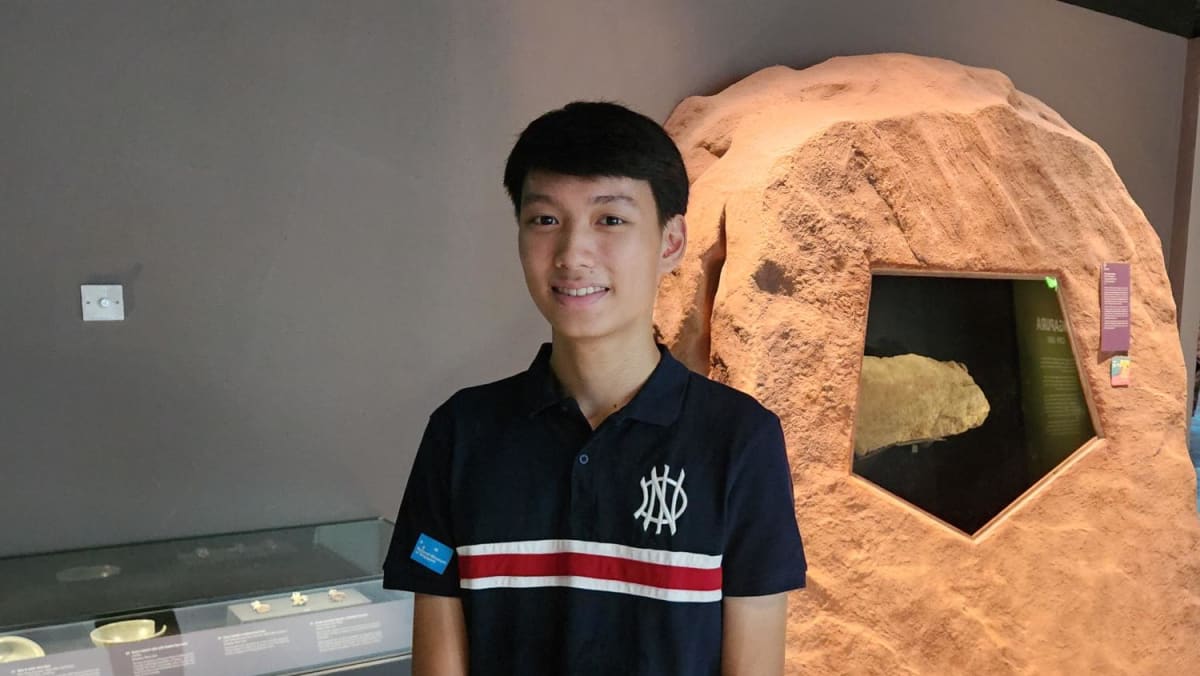
SINGAPORE — The first time Mr Lee I-Shiang heard about the Singapore Stone was at a National Day Parade rehearsal in 2016, which featured a performance about a legendary warrior called Badang picking it up and flinging it towards the Singapore River.
Seven years later, the 18-year-old is one of the few trying to crack its hidden code, publishing a paper that could help unravel one of its greatest mysteries — its inscription.
“The fact that people really don’t know what it says made me think that it would be interesting to just try to find out more,” Mr Lee told TODAY in an interview.
Dated from the 10th to 14th centuries, the stone was about 3m high and 3m wide. It stood at the mouth of the Singapore River but was later blown up in 1843 by the British to build military quarters.
A fragment of the stone now sits at the National Museum of Singapore. It has several lines of inscriptions in Kawi script, though it has never been deciphered.
Many historians believe that these writings hold key information to Singapore’s ancient past.
Kawi script, or Old Javanese script, was found mainly in Java and used in most of the coastal regions of Southeast Asia from the eighth to 16th century.
In his paper published in an open access journal on MDPI, Mr Lee compared inscriptions on the Singapore Stone with an ancient Javanese inscription on the Calcutta Stone which was dated from 1041 CE (Common Era).
He found many stylistic similarities between the characters on both stones, including the overall shapes and strokes, providing more evidence that the Singapore Stone dates back to the 11th century.
LANGUAGES AS A HOBBY
Mr Lee’s love for languages started when he was young, as his mother would take him to the library every month.
“I read quite a lot when I was young, I would borrow around 50 books at once,” he said.
Some of these books included the Geronimo Stilton series, which follows a mouse journalist who travels around the world, as well as Agatha Christie novels.
But for Mr Lee, his true love lies in maths and science while the humanities and languages are “more like a hobby” for him.
An NUS High School student in Math and Science, Mr Lee took up the year-long research project on the Singapore Stone last year “for fun”.
Part of the Nanyang Research Programme, the original project required researchers to complete a project on the stone, though everything else was very open-ended, said Mr Lee.
This proved to be challenging at first, given that Mr Lee did not know much about the stone, apart from what he had watched at the NDP National Education Show for Primary 5 students.
“I saw it in the museum before but I don’t know much about it. I just know that people don’t know what it says,” he said.
There had been little research done about the enigmatic stone, so Mr Lee had to turn to whatever resources he could find on the internet — blogs, old research papers and government articles.